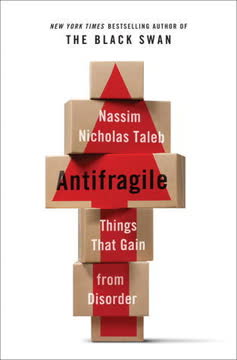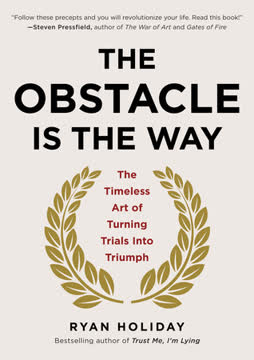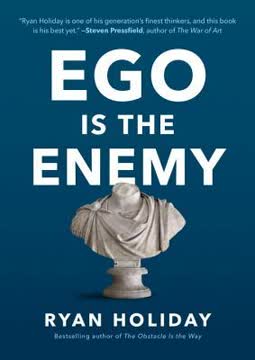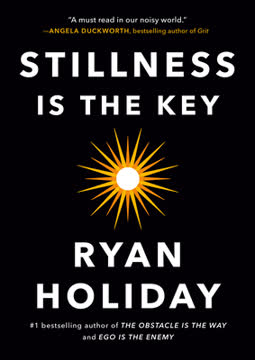가지 주요 요점
1. 회복탄력성은 타고난 특성이 아닌 배울 수 있는 기술이다
연구에 따르면 회복탄력성은 정상적이며, 일반적인 기술과 자원을 포함한다.
회복탄력성 정의. 회복탄력성은 역경, 스트레스, 도전에 잘 적응하고 대처하는 능력이다. 이는 어려운 감정이나 경험을 피하는 것이 아니라, 심리적 유연성을 유지하고 좌절에도 불구하고 가치 있는 목표를 계속 추구하는 것이다.
회복탄력성의 구성 요소. 회복탄력성의 주요 구성 요소는 다음과 같다:
- 자기 인식
- 감정 조절
- 낙관주의
- 문제 해결 능력
- 강한 사회적 연결
- 목적 의식
회복탄력성 개발. 회복탄력성은 다음을 통해 길러질 수 있다:
- 마음챙김과 수용 연습
- 개인적 가치 명확화
- 문제 해결 기법 학습
- 사회적 지원 네트워크 구축
- 이완 운동 참여
- 부정적인 사고 패턴 도전
2. 마음챙김과 수용은 스트레스 관리의 핵심이다
역설적이게도, 고통을 수용하면 어쨌든 감소하는 것처럼 보이며, 우리의 감정과 싸우려 할 때보다 더 우아하고 자연스러운 방식으로 나타난다.
마음챙김 연습. 마음챙김은 판단 없이 현재 순간에 주의를 기울이는 것이다. 이는 다음과 같은 방법으로 스트레스를 줄이는 데 도움을 준다:
- 생각과 감정에 대한 인식 증가
- 반추와 걱정 감소
- 감정 조절 향상
- 집중력과 주의력 개선
수용 전략. 수용은 체념이 아니라, 생각과 감정을 변화시키거나 피하려 하지 않고 경험하려는 의지이다. 이 접근법은 다음과 같은 효과가 있다:
- 불편한 경험과의 싸움 감소
- 감정이 자연스럽게 흐르도록 허용
- 문제 해결과 가치 있는 행동을 위한 정신적 에너지 확보
3. 개인적 가치를 명확히 하여 의사결정과 행동을 안내하라
회복탄력성을 유지하는 것은 고통과 불안과 같은 불쾌한 경험을 포함한 역경에도 불구하고 개인적 가치를 따르는 데 헌신하는 것이며, 헌신이 흔들릴 때마다 다시 회복하는 것이다.
가치 식별. 가치는 삶에서 가장 중요한 것을 반영하는 지침 원칙이다. 목표와는 달리, 가치는 끝점이 아닌 지속적인 방향이다. 예시로는 다음이 있다:
- 정직
- 연민
- 성장
- 창의성
- 연결
가치에 따른 생활. 개인적 가치에 맞춘 행동은 다음과 같은 효과가 있다:
- 목적과 의미 제공
- 동기와 헌신 증가
- 어려운 상황에서의 의사결정 향상
- 전반적인 삶의 만족도 개선
4. 문제 해결 능력은 도전에 대한 적응력을 향상시킨다
문제 해결은 인지행동치료의 한 형태로, 다양한 문제에 효과적이라는 연구 결과가 있다.
문제 해결 단계:
- 문제를 명확히 정의한다
- 여러 가지 잠재적 해결책을 생성한다
- 각 옵션의 장단점을 평가한다
- 최선의 해결책을 선택하고 실행한다
- 결과를 검토하고 필요에 따라 조정한다
효과적인 문제 해결의 이점:
- 도전에 대한 자신감 증가
- 스트레스와 불안 감소
- 의사결정 능력 향상
- 전반적인 회복탄력성과 적응력 향상
5. 사회적 지원과 자기주장은 감정적 회복탄력성에 기여한다
회복탄력성에 대한 연구는 친구와 가족의 정서적 지원과 격려와 같은 적절한 사회적 지원의 중요성을 일관되게 강조한다.
사회적 지원 구축. 강한 사회적 연결은 회복탄력성에 필수적이다. 사회적 지원을 강화하는 전략은 다음과 같다:
- 기존 관계를 육성한다
- 공통 관심사를 가진 그룹이나 커뮤니티에 가입한다
- 자원봉사나 지역사회 활동에 참여한다
- 필요할 때 전문적인 지원을 구한다
자기주장 개발. 자기주장은 타인의 권리를 존중하면서 자신의 필요, 의견, 감정을 효과적으로 표현하는 것이다. 주요 자기주장 기술은 다음과 같다:
- "나" 진술 사용
- 명확한 경계 설정
- 필요할 때 "아니오"라고 말하기
- 존중하며 반대 의견 표현
- 필요하거나 원하는 것을 요청하기
6. 점진적 이완 기법은 신체적, 정신적 긴장을 줄인다
'이완'이라는 용어는 생리학적 관점에서 근육 이완을 의미하며, 이는 모든 수축이나 '긴장'의 완전한 부재, 즉 근육 섬유의 이완과 길어짐을 의미한다.
점진적 근육 이완 (PMR). 이 기법은 깊은 이완을 달성하기 위해 다양한 근육 그룹을 체계적으로 긴장시키고 이완시키는 것이다. 이점은 다음과 같다:
- 신체적 긴장 감소
- 불안과 스트레스 감소
- 수면의 질 향상
- 신체 인식 향상
PMR 연습:
- 편안한 자세를 찾는다
- 특정 근육 그룹에 집중한다
- 근육을 5-10초 동안 긴장시킨다
- 긴장을 풀고 이완의 감각에 집중한다
- 다음 근육 그룹으로 이동한다
- 몸 전체에 이 과정을 반복한다
7. 걱정 연기는 불안을 더 효과적으로 관리하는 데 도움을 준다
걱정 연기는 앞서 논의된 마음챙김과 수용 기반 전략, 특히 현재 순간에 '중심을 잡고' 내재적으로 가치 있는 행동에 '몰입'하는 것과 통합되었다.
걱정 이해. 걱정은 잠재적인 미래의 부정적 결과에 초점을 맞춘 생각의 연쇄이다. 일부 걱정은 생산적일 수 있지만, 과도한 걱정은 종종 불안과 스트레스로 이어진다.
걱정 연기 구현:
- 걱정하는 생각을 식별한다
- 매일 특정 "걱정 시간"을 정한다
- 이 시간 외에 걱정이 생기면 인식하고 지정된 걱정 시간으로 연기한다
- 걱정 시간 동안, 걱정을 건설적으로 다루거나 문제 해결 기법을 사용한다
걱정 연기의 이점:
- 걱정에 소비되는 시간 감소
- 현재 순간에 대한 인식 증가
- 현재 작업에 집중할 수 있는 능력 향상
- 전반적인 감정적 웰빙 향상
8. 스토아 철학은 회복탄력성을 구축하는 데 있어 시대를 초월한 지혜를 제공한다
그렇다면 무엇을 해야 할까? 우리의 힘 안에 있는 것을 최대한 활용하고, 나머지는 자연스럽게 받아들이는 것이다.
회복탄력성을 위한 주요 스토아 철학 원칙:
- 통제할 수 있는 것에 집중한다
- 바꿀 수 없는 것을 받아들인다
- 덕과 지혜를 기른다
- 자기 절제와 절도를 실천한다
- 도전을 성장의 기회로 받아들인다
스토아 지혜 적용:
- 비합리적인 믿음을 도전하기 위해 이성적 사고를 사용한다
- 부정적 시각화를 연습하여 현재 가진 것에 감사한다
- 자신의 행동을 반성하고 경험에서 배운다
- 개인적 욕망을 넘어선 의무와 목적 의식을 기른다
- 역경에 직면했을 때 감정적 평정을 유지한다
마지막 업데이트 날짜:
FAQ
What is "Build Your Resilience" by Donald J. Robertson about?
- Focus on psychological resilience: The book explores how ordinary people can adapt and cope well with adversity by developing skills like problem-solving, emotional regulation, and social competence.
- Integrative approach: Donald J. Robertson combines evidence-based cognitive-behavioural therapy (CBT) with modern mindfulness and acceptance-based therapies, especially Acceptance and Commitment Therapy (ACT).
- Practical self-help guide: Readers are provided with a step-by-step plan to build resilience, emphasizing values clarification, acceptance, mindfulness, relaxation, and social skills for thriving in any situation.
Why should I read "Build Your Resilience" by Donald J. Robertson?
- Preventative and general wellbeing: The book aims to enhance resilience for both current and future adversities, improving overall quality of life rather than just fixing specific problems.
- Evidence-based strategies: It draws on well-researched psychological therapies, including CBT, ACT, and relaxation training, ensuring scientifically supported advice.
- Holistic and accessible: Robertson integrates ancient Stoic philosophy with modern psychology, making the content practical and relevant for everyday challenges.
What are the key takeaways and focus points from "Build Your Resilience" by Donald J. Robertson?
- Skill acquisition and practice: Building resilience is likened to learning a physical skill, requiring systematic practice of techniques like Progressive and Applied Relaxation, worry postponement, and assertiveness.
- Mindfulness and acceptance: Central themes include accepting internal experiences, practicing cognitive defusion, and cultivating present-moment awareness to reduce unhelpful emotional reactions.
- Philosophical integration: Stoicism is presented as a timeless framework, emphasizing control over actions, acceptance of external events, and living in accordance with personal values.
How does Donald J. Robertson define psychological resilience in "Build Your Resilience"?
- Positive adaptation: Resilience is described as “patterns of positive adaptation during or following significant adversity,” relying on everyday skills like problem-solving and emotional regulation.
- Commitment to values: Robertson frames resilience as the ability to remain committed to one’s core values despite setbacks, rather than simply eliminating distress.
- Dynamic process: Resilience is seen as an ongoing, flexible process of coping well and bouncing back, not about being perfect or emotion-free.
What are the main risk and protective factors for resilience according to "Build Your Resilience"?
- Risk factors: These include childhood developmental issues, daily hassles, major setbacks (like bereavement or illness), and the stress of seeking greater meaning or purpose.
- Protective factors: Social support from family, friends, and community is highlighted as the most consistent protective factor, along with self-acceptance, confidence, and emotional regulation.
- Experiential avoidance: Attempts to control or avoid unpleasant internal experiences often backfire, increasing distress and reducing resilience.
What is experiential avoidance and why is it important in "Build Your Resilience" by Donald J. Robertson?
- Definition: Experiential avoidance is the unhelpful effort to suppress, control, or avoid unpleasant thoughts, feelings, or memories—a core concept in ACT.
- Counterproductive effects: Trying to avoid or control internal experiences often worsens emotional suffering and interferes with living according to values.
- Creative hopelessness: The book encourages letting go of futile control efforts and instead cultivating psychological flexibility through mindful acceptance and valued action.
How does "Build Your Resilience" by Donald J. Robertson explain values clarification and its role in resilience?
- Values as life directions: Values are described as ongoing, intrinsic life directions (e.g., “acting with integrity”) that guide actions, not just specific goals.
- Distinction from goals: Values provide meaning and motivation, while goals are specific, achievable outcomes that serve those values.
- Foundation for resilience: Clarifying values helps define what resilience means personally and motivates individuals to face emotional challenges.
What does "Build Your Resilience" by Donald J. Robertson say about commitment to valued action?
- Central to resilience: Acting according to core values despite internal barriers is presented as the essence of emotional resilience.
- Goal-setting and planning: The book recommends setting SMART goals (Specific, Measurable, Achievable, Relevant, Time-limited) aligned with values and scheduling value-driven activities.
- Overcoming barriers: It distinguishes between external (practical) and internal (psychological) barriers, suggesting problem-solving for the former and mindfulness/acceptance for the latter.
What are acceptance and cognitive defusion, and how do they contribute to resilience in "Build Your Resilience"?
- Acceptance: Willingness to fully experience unpleasant thoughts and feelings without struggling against them, in service of valued living.
- Cognitive defusion: Techniques for seeing thoughts as mental events rather than literal truths, reducing their emotional impact (e.g., labeling thoughts, imagining them as leaves on a stream).
- Psychological flexibility: Together, acceptance and defusion foster an “open” response style, increasing flexibility and enabling value-driven action despite internal challenges.
How does "Build Your Resilience" by Donald J. Robertson describe mindfulness and its role in resilience?
- Mindfulness as ‘centred’ responding: Mindfulness involves present-moment awareness and adopting the perspective of self-as-observer, complementing acceptance and defusion.
- Reducing rumination and worry: Mindfulness helps limit unproductive rumination about the past and worry about the future, common in anxiety and depression.
- Practical exercises: The book includes mindfulness practices like mindful eating, body scans, and brief meditations to cultivate awareness and flexibility in daily life.
What is Progressive Relaxation and how is it used in "Build Your Resilience" by Donald J. Robertson?
- Scientific muscle relaxation: Progressive Relaxation (PR) involves systematically tensing and releasing muscle groups to achieve deep relaxation and reduce residual tension.
- Stepwise training: The book outlines a five-week program, starting with seven muscle groups and progressing to fewer groups and relaxation by recall, making the practice efficient and effective.
- Resilience benefits: PR reduces physical and mental tension, improves stress tolerance, and complements mindfulness and acceptance strategies.
How does "Build Your Resilience" by Donald J. Robertson integrate Stoicism into modern resilience-building?
- Philosophical origins: Stoicism, an ancient philosophy, teaches distinguishing what is within our control from what is not, influencing modern CBT and resilience methods.
- Core principles: The Stoics advocated focusing on one’s own actions and intentions, accepting external outcomes with equanimity, and living in accordance with Nature.
- Practical exercises: The book introduces Stoic practices like the “reserve clause,” the “View from Above,” and contemplating the ideal Sage to foster perspective, acceptance, and value-driven living.
리뷰
회복탄력성을 키워라는 주로 긍정적인 평가를 받고 있으며, 독자들은 실용적인 접근법과 증거 기반 전략을 칭찬하고 있다. 많은 이들이 이 책이 스토아 철학과 현대 치료 기법인 ACT에 기초하고 있다는 점을 높이 평가한다. 리뷰어들은 이 책이 유익하고 유용한 연습들로 가득 차 있다고 느끼지만, 일부는 학문적인 어조가 일반 독자들에게는 다소 어려울 수 있다고 언급한다. 이 책은 자기 수용과 개인의 가치와 목표를 통해 회복탄력성을 키우는 데 중점을 두고 있다는 점에서 찬사를 받고 있다. 일부 독자들은 책이 다소 어렵지만 보람 있다고 느꼈고, 다른 이들은 다른 자기계발서에서 반복된 개념이 있다고 생각했다.
Similar Books



















